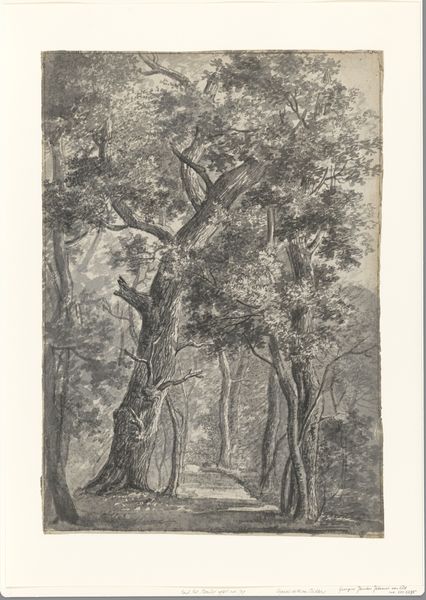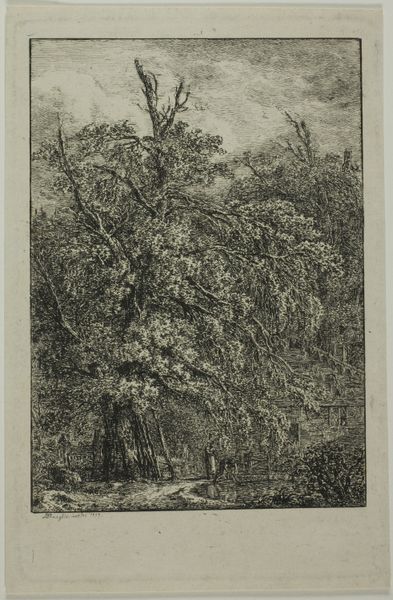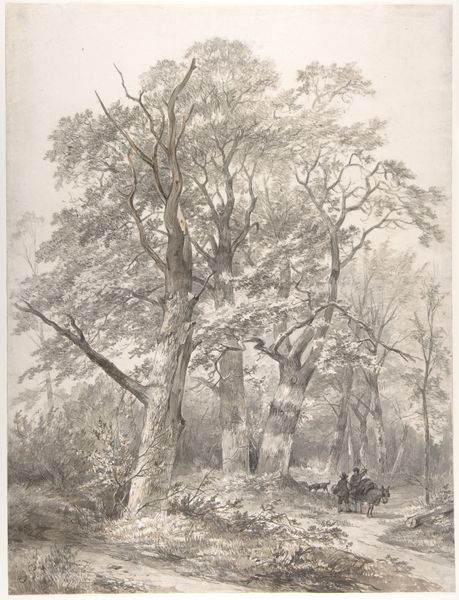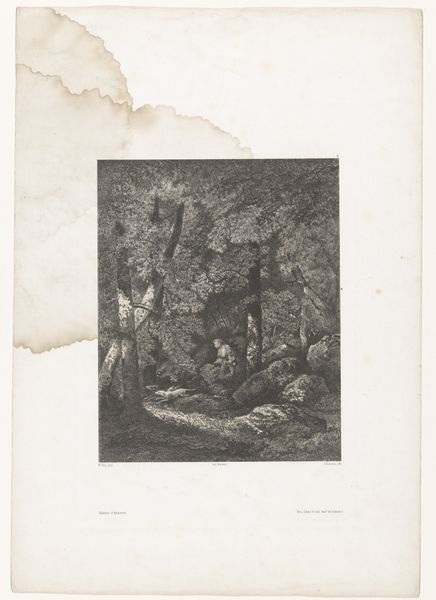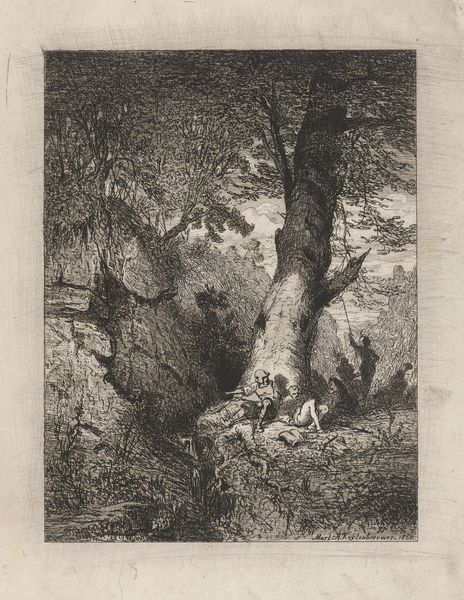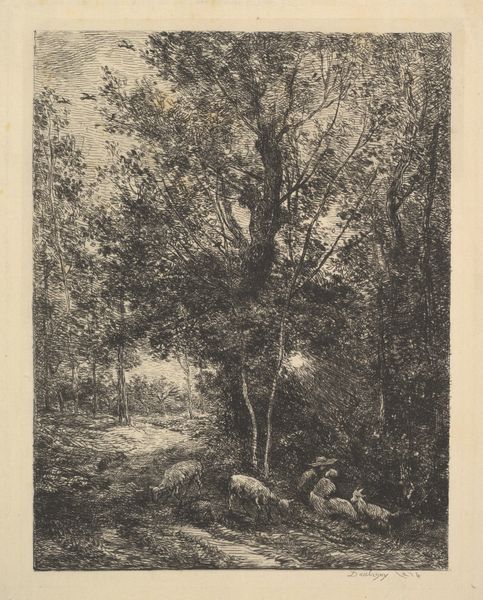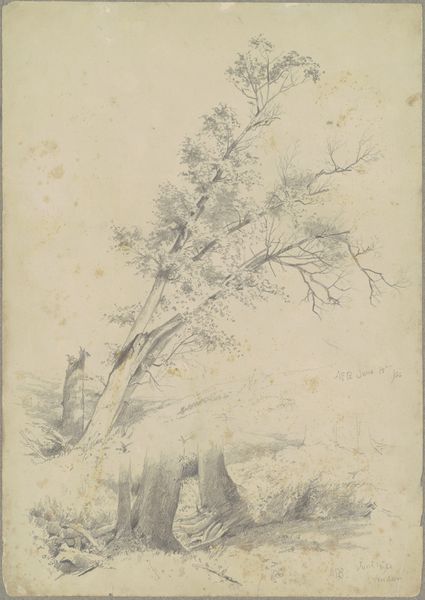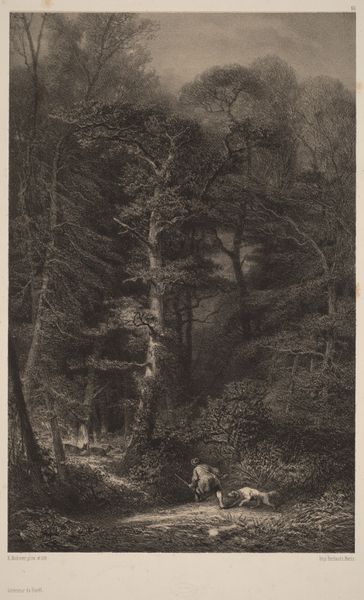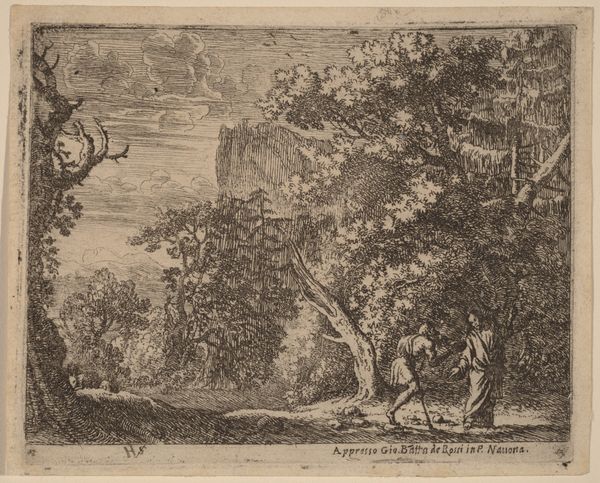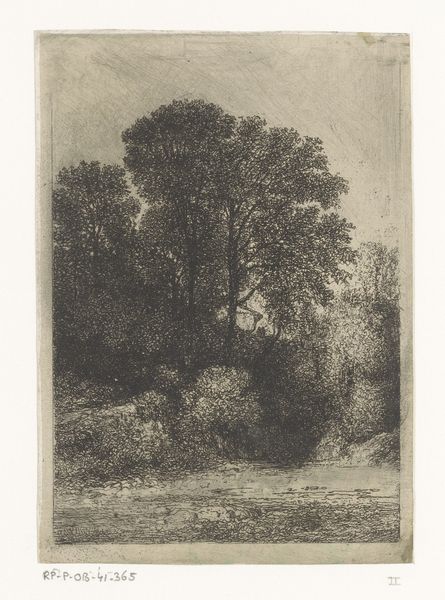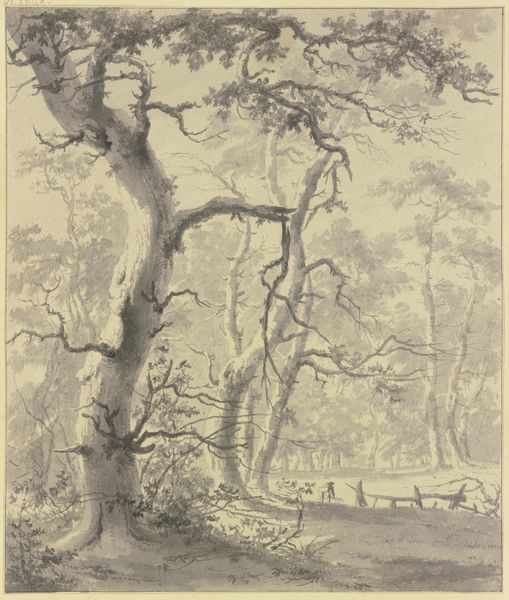
drawing, pencil
#
drawing
#
landscape
#
pencil
#
realism
Dimensions: sheet: 30.3 × 22.9 cm (11 15/16 × 9 in.)
Copyright: National Gallery of Art: CC0 1.0
Editor: This drawing is called "Tree and Foliage," created around 1873 by Walter Shirlaw, using pencil. I’m struck by the texture; the trees in the foreground seem almost tactile. What do you see in terms of the structure and composition? Curator: The image, fundamentally, is an exploration of contrasting textures, rendered meticulously through pencil. Observe the strategic juxtaposition of light and shadow. Light here is not merely illuminative; it sculpts form, lending a dimensional quality to the trunks, highlighting the sinuous contours and the arboreal architecture. How do these tonal variations affect your perception of depth within the composition? Editor: I see what you mean; the darker areas really push back, making the sunlit leaves appear closer. But, the lack of vibrant color almost flattens it for me, especially compared to how a painting might render this scene. Curator: Indeed. However, the absence of chromatic data is compensated by the textural and tonal contrasts. Notice the density of lines used to delineate the foliage in the foreground against the comparatively sparse strokes defining the distant woods. Consider this drawing less as a literal depiction of a forest and more as a structured arrangement of lines and textures that evoke a sense of depth and organic form. The composition isn't trying to trick us, but present its own reality. Editor: That's a helpful way to think about it. So, focusing on those elements makes the artist's decisions about light, shadow, and texture really come to the fore. I appreciate how your insights highlighted the technical choices made by the artist. Curator: And considering the interplay between light and texture has hopefully refined your understanding of the artist’s intent through a focus on form, and it has shown that the absence of color is not a limitation, but rather a conscious selection shaping our encounter with this serene depiction of trees.
Comments
No comments
Be the first to comment and join the conversation on the ultimate creative platform.
